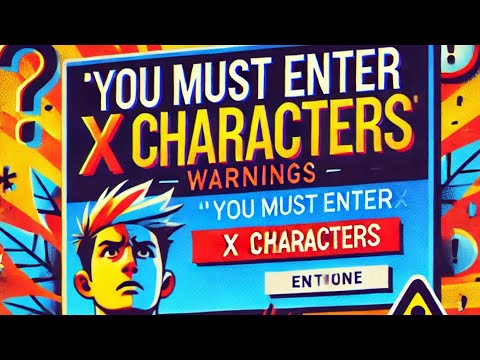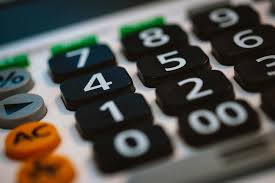The Benefits of Learning with Fill-in-the-Blank Texts for Elementary Students

Strong 8k brings an ultra-HD IPTV experience to your living room and your pocket.
Fill-in-the-blank activities are like puzzles that help kids learn better. These simple exercises ask students to add missing words to sentences or stories. Teachers love using them because they work so well. Let's explore why fill-in-the-blank texts are amazing tools for elementary students.
What Are Fill-in-the-Blank Texts?
Fill-in-the-blank texts, also known as Teks Kosong in some languages, are stories or sentences with empty spaces where words should go. Students read the text and figure out which words fit best in each blank space. Sometimes teachers give word choices to pick from. Other times, kids need to think of their own words that make sense.
For example: "The cat sat on the __." Students might fill in "mat," "chair," or "roof." Each answer could work, but some fit better than others based on the story.
Improves Reading Skills
Fill-in-the-blank activities make reading stronger in many ways. When students look for the right words, they must understand what the whole sentence means. This helps them become better readers who think about what they read.
Students learn to use context clues when they do these activities. Context clues are hints in the sentence that help figure out unknown words. If a sentence says "The dog barked loudly at the __," kids can guess it might be "mailman," "cat," or "stranger" based on what makes sense.
These exercises also help students notice how sentences work together. They see how one sentence connects to the next one. This skill helps them understand longer stories and books better.
Builds Vocabulary Knowledge
Fill-in-the-blank texts are great for learning new words. When students see a word used in a sentence, they understand it better than just reading it in a dictionary. The sentence shows them exactly how to use the word correctly.
Teachers can pick specific words they want students to learn. They can make fill-in-the-blank activities that use these target words. This way, students practice new vocabulary in a fun way instead of just memorizing word lists.
Students also learn that some words go together naturally. They discover which words sound right in different situations. This helps them speak and write more clearly.
Enhances Writing Abilities
These activities teach students how good sentences work. When they fill in blanks, they learn about sentence structure and grammar without boring lessons. They see how words fit together to make clear, strong sentences.
Students practice choosing the best word for each situation. This skill helps them become better writers who pick exactly the right words for their own stories and reports. They learn that word choice matters for clear communication.
Fill-in-the-blank exercises also show students different writing styles. They might work with funny stories, information texts, or poems. Each type teaches them new ways to express ideas in their own writing.
Supports Different Learning Styles
Every student learns differently, and fill-in-the-blank activities work for many learning styles. Visual learners like seeing the words on paper and figuring out patterns. They can highlight or circle their answers to stay organized.
Students who learn better by talking can work with partners or groups. They can discuss their answers and explain why they chose certain words. This helps them learn from each other and think more deeply.
Some students need more support, while others need bigger challenges. Teachers can make easier fill-in-the-blank activities with word banks or picture clues. For advanced students, they can create harder exercises without any hints.
Makes Learning Fun and Interactive
Fill-in-the-blank activities feel like games instead of regular schoolwork. Students enjoy solving the word puzzles and feel proud when they find good answers. This positive feeling helps them want to keep learning.
These activities work well for group projects too. Students can create their own fill-in-the-blank stories for classmates to solve. This gets everyone involved and excited about learning together.
Teachers can use technology to make these activities even more engaging. Interactive computer programs and educational apps make fill-in-the-blank exercises feel like fun games with sounds and animations.
Develops Critical Thinking Skills
Students must think carefully when they do fill-in-the-blank activities. They cannot just guess randomly. They need to read the whole sentence or paragraph and think about what makes sense.
This process teaches students to analyze information and make good choices. They learn to consider different possibilities and pick the best option. These thinking skills help them in all school subjects, not just reading and writing.
Students also learn to check their work and fix mistakes. When an answer doesn't sound right, they can try different words until they find one that works better.
Easy to Use in Any Subject
Teks Kosong activities work great in all school subjects. In science class, students can fill in blanks about animals, plants, or weather. In social studies, they can complete sentences about different countries or historical events.
Math word problems can use fill-in-the-blank formats too. Students fill in numbers or math terms to complete problems. This helps them understand math vocabulary and concepts better.
Conclusion
Fill-in-the-blank texts offer many benefits for elementary students. They improve reading skills, build vocabulary, enhance writing abilities, and make learning enjoyable. These activities support different learning styles and help students develop important thinking skills.
Teachers should use fill-in-the-blank exercises regularly because they work so well for young learners. When students practice with these activities, they become stronger readers, writers, and thinkers. The skills they learn will help them succeed in school and beyond.
Note: IndiBlogHub features both user-submitted and editorial content. We do not verify third-party contributions. Read our Disclaimer and Privacy Policyfor details.







